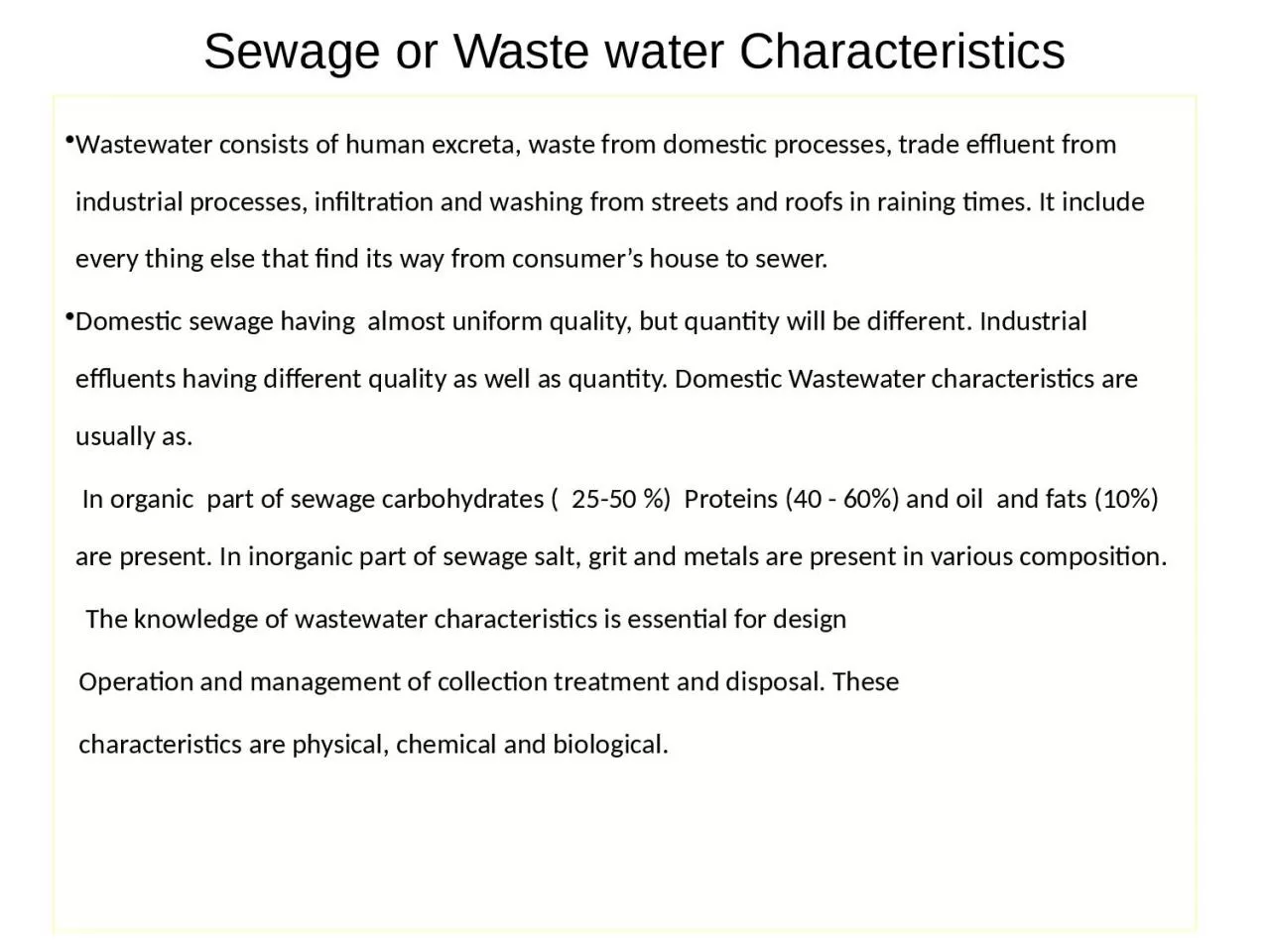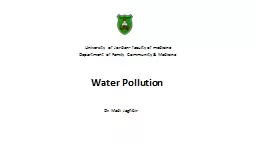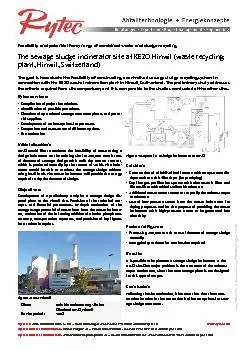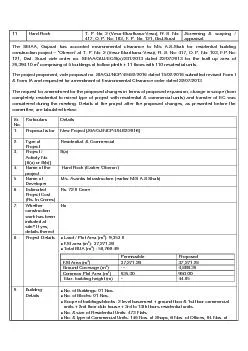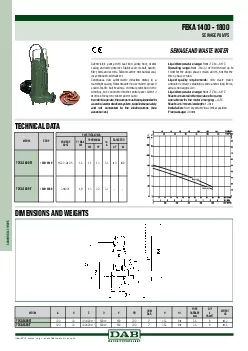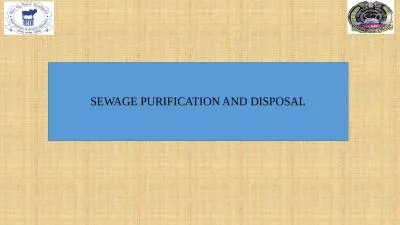PPT-Sewage or Waste water Characteristics
Author : ella | Published Date : 2023-09-26
Wastewater consists of human excreta waste from domestic processes trade effluent from industrial processes infiltration and washing from streets and roofs in raining
Presentation Embed Code
Download Presentation
Download Presentation The PPT/PDF document "Sewage or Waste water Characteristics" is the property of its rightful owner. Permission is granted to download and print the materials on this website for personal, non-commercial use only, and to display it on your personal computer provided you do not modify the materials and that you retain all copyright notices contained in the materials. By downloading content from our website, you accept the terms of this agreement.
Sewage or Waste water Characteristics: Transcript
Download Rules Of Document
"Sewage or Waste water Characteristics"The content belongs to its owner. You may download and print it for personal use, without modification, and keep all copyright notices. By downloading, you agree to these terms.
Related Documents

